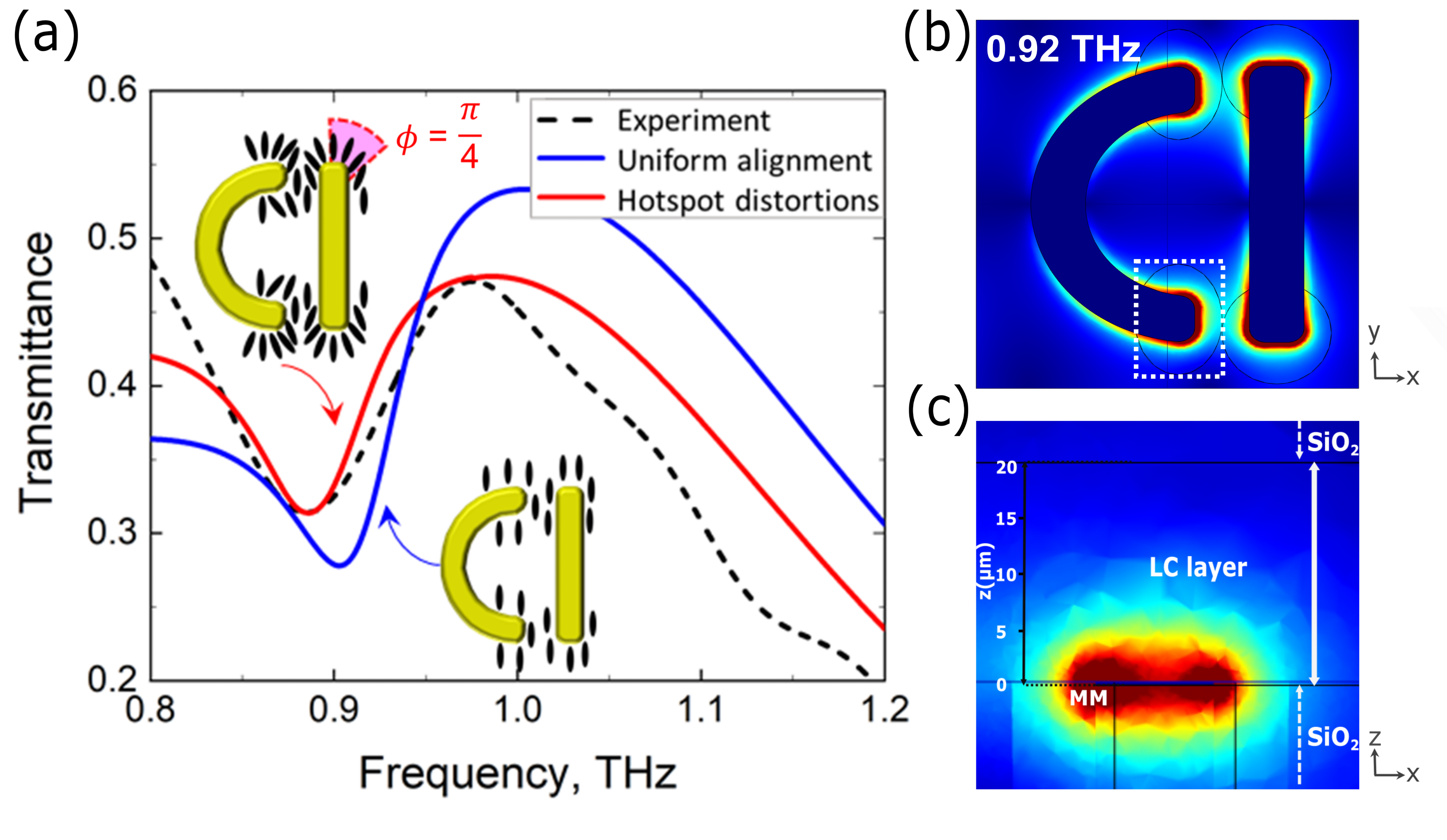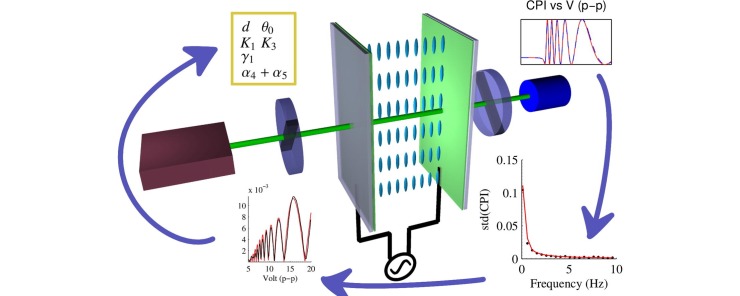Research
Classifying and characterising disorder and partial order for strong optical response in soft matter with topological data analysis.
Soft matter systems have some common features, typically showing high susceptibility to deformation under small mechanical or thermal stress, and the significant complexity of their components (liquid crystals, polymers, biological tissues, etc). These characteristics make the mathematical modelling of soft materials challenging and, in most cases, powerful analytic methods are required for accurate and quantitative characterisation of their dynamics.
Topological data analysis is a relatively new tool that uses the shape of the data to obtain meaningful information. Several topological data analytic tools have been successfully applied in the analysis of time-independent data of soft matter systems. These analyses have allowed characterising the morphology of soft materials, the atomic configurations of complex organic molecules and ion aggregation systems.
In this project, funded by the Leverhulme Trust, partially ordered, composite nanomaterials, with complex structural and physical behaviour are investigated. Our analytic framework, based on topological data analysis, provides both a qualitative and quantitative characterisation of the dynamical behaviour of a wide range of semi-ordered soft matter, captures the degree of organisation at a mesoscopic level, tracking their time-evolution and ultimately detecting the order-disorder transition at the microscopic scale.
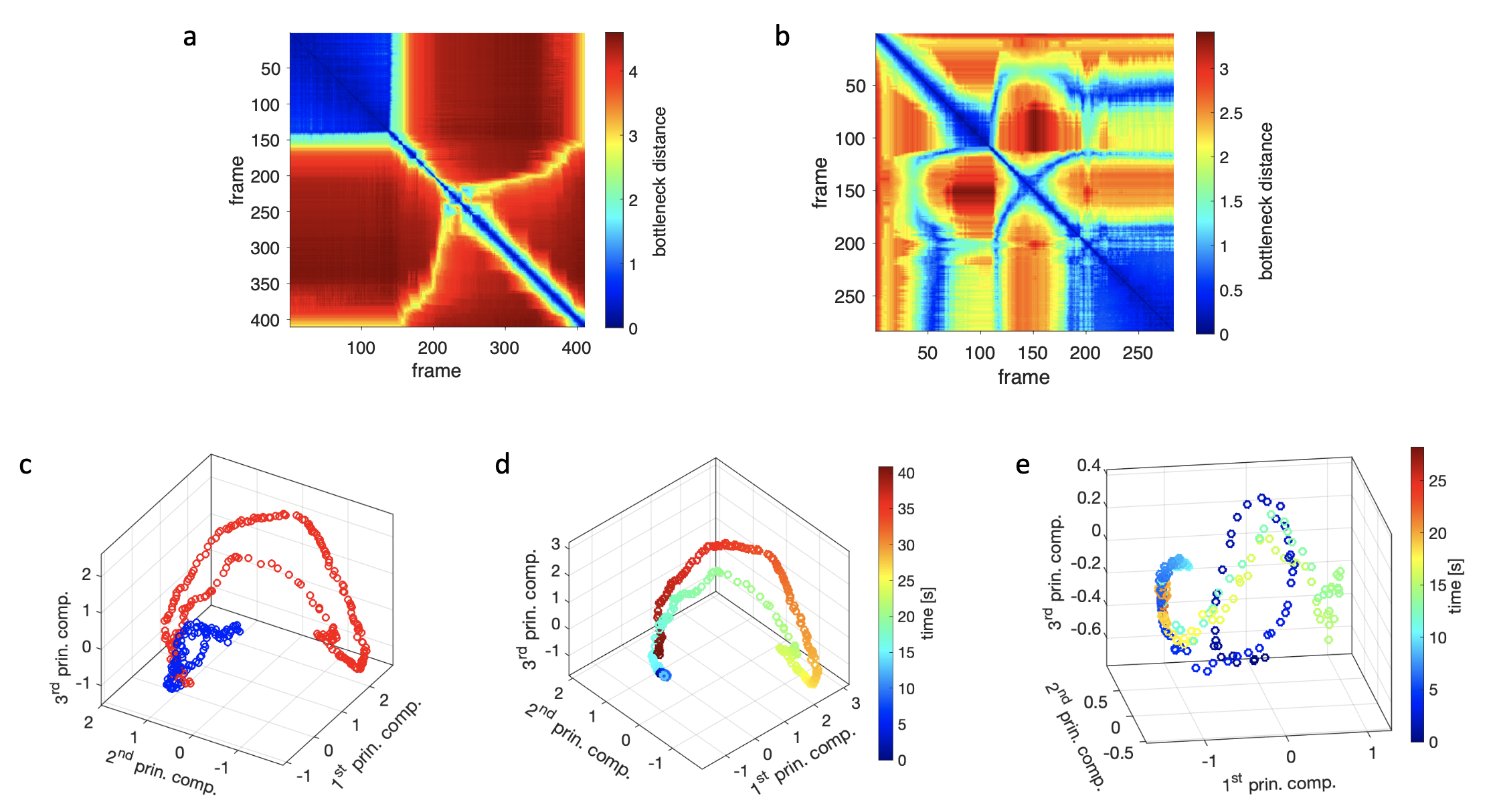
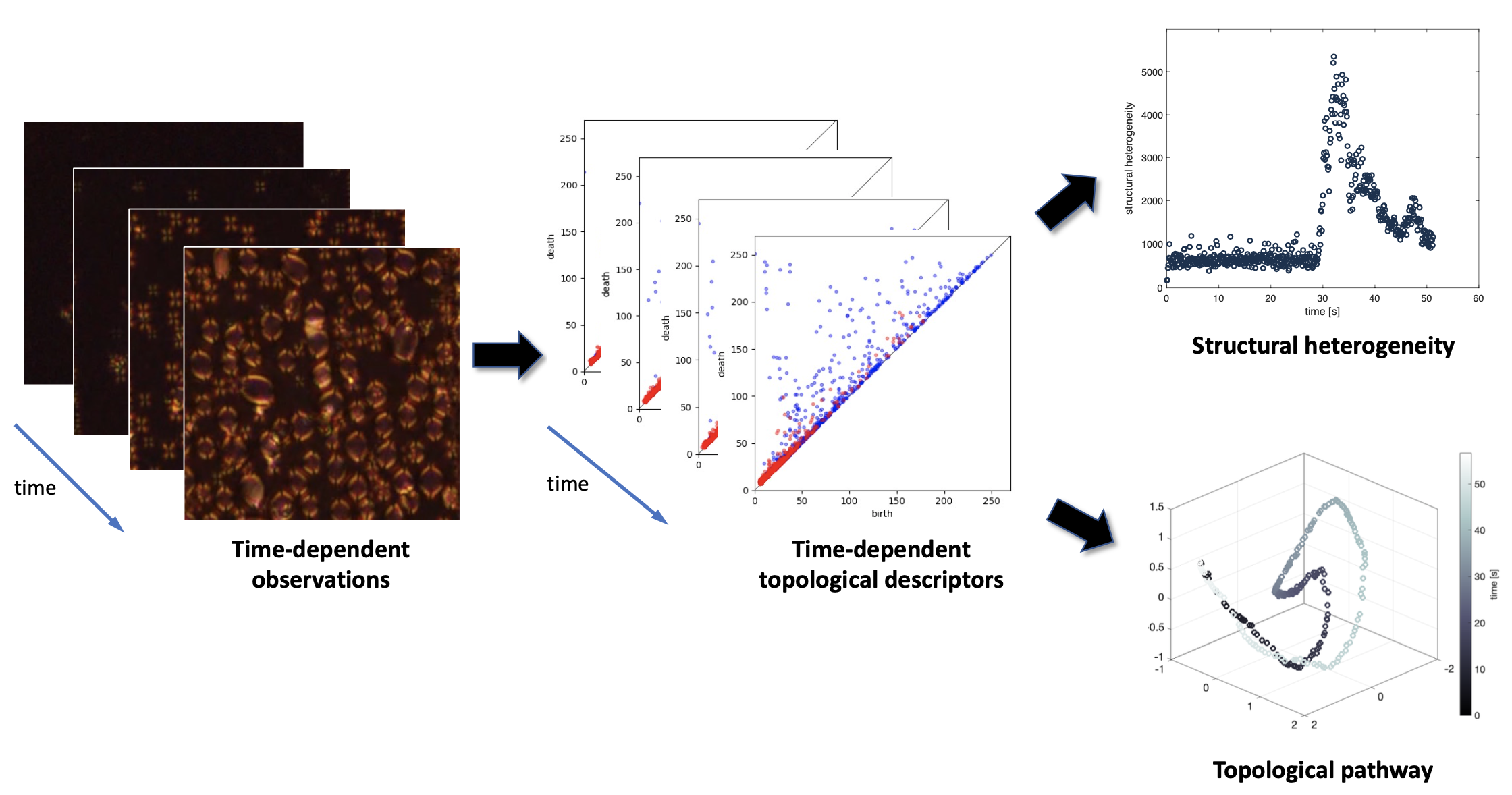
“Tracking the time evolution of soft matter systems via structural heterogeneity”, I. Membrillo-Solis, T. Orlova, K. Bednarska, P. Lesiak, T. Wolinski, Giampaolo D'Alessandro, J. Brodzki, M. Kaczmarek, Communications Materials, 3, 1 (January 2022). DOI: 10.1038/s43246-021-00223-1
Biological liquid crystals
While liquid crystals are known for their applications in dispays and modulators, they also occur naturally in various biological systems such as bacterial colonies and epithelial tissue. The liquid crystalline order serves various functions, from tissue morphogenesis to increased antibiotic resistance of bacteria. We explore phenomena occurring in such biological liquid crystals, experimentally, through the mathematical modelling and image analysis techniques. For example, we modelled how the self-assembled structure of liquid crystalline P. aeruginosa biofilms by acting as an adsorptive diffusion barrier can lead to stronger antibiotic resistance.
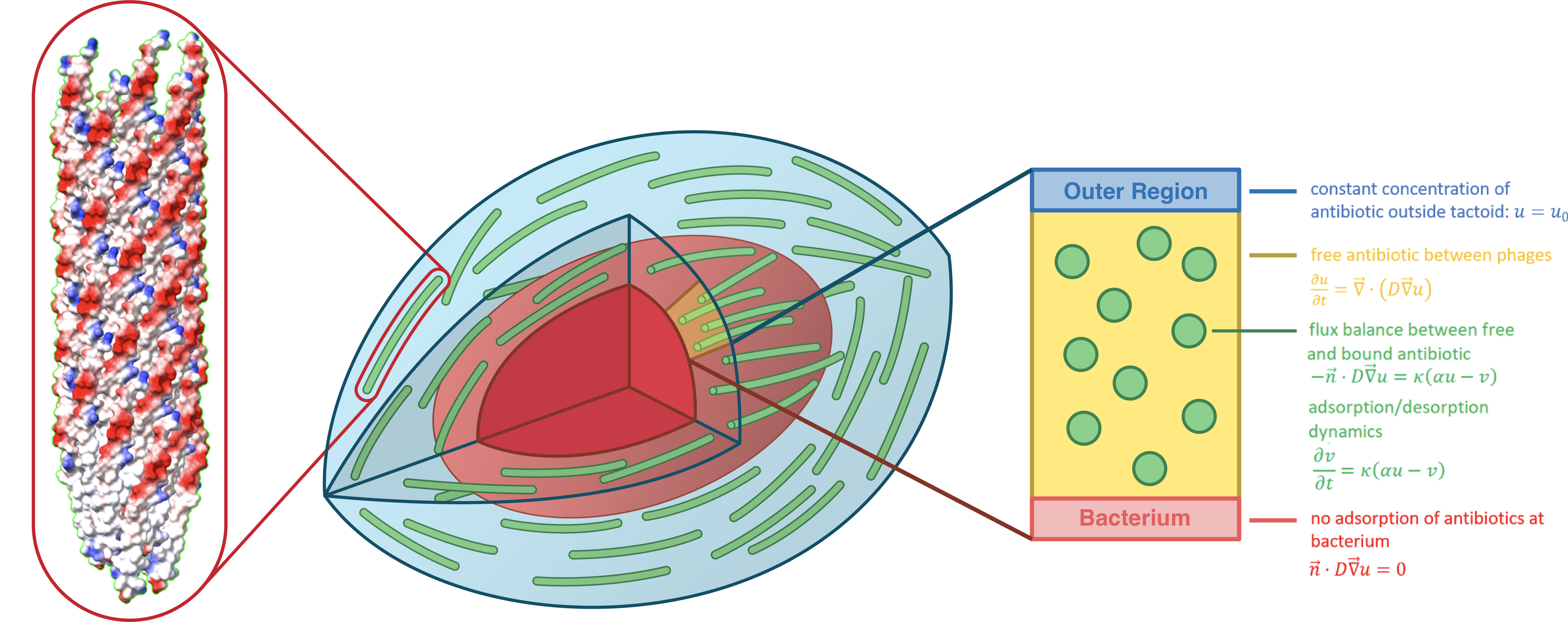
“Homogenization modelling of antibiotic diffusion and adsorption in viral liquid crystals”, M. T. van Rossem, P. R. Secor, S. Wilks; M. Kaczmarek, G. D’Alessandro, RS Open Science (January 2023); DOI: 10.1098/rsos.221120
"Modelling of filamentous phage-induced antibiotic tolerance of P. aeruginosa", M. T. van Rossem, S. Wilks; M. Kaczmarek; P. R. Secor; G. D’Alessandro; PLOS ONE 17, e0261482 (April 2022); DOI: 10.1371/journal.pone.0261482
Controlling light with light
Photovoltaic spatial light modulators combine twisted-nematic liquid crystals with organic photovoltaic thin films to achieve self-activated and optically controlled modulation of their optical transmittance. The organic layer align liquid crystals as well as generates an electric field under illumination that changes their orientation. The short response time, energy-efficient operation, user-controllable sensitivity and tunability of the spectral response through material selection make these devices attractive for a variety of dynamic windows and optical protection systems. In such photovoltaic spatial light modulators, efficient modulation of light transmission can be achieved, highly reversible and stable for hours under light exposure.
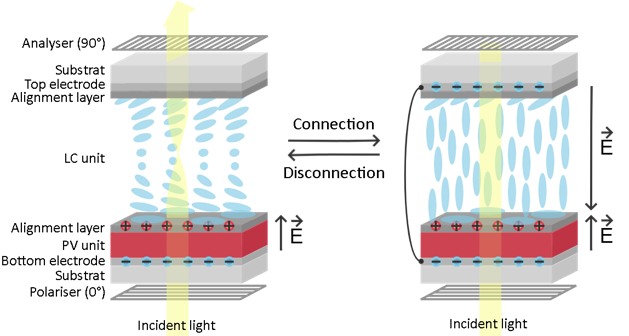
“Self-powered switchable glazing based on nematic liquid crystals and organic photovoltaic layers for smart windows applications”; S. Fall, J. Wang, T. Regrettier, N. Brouckaert, O. A. Ibraikulov, N. Leclerc, Y. Lin, M. Ibn Elhaj, L. Komitov, P. Lévêque, M. Kaczmarek, T. Heiser, ACS Applied Materials & Interfaces (January 2023), DOI: 10.1021/acsami.2c21727
“Optical and electrical properties characterisation of photovoltaic spatial-light modulators”, N. Brouckaert, D. Bankova, T. Heiser, G. D’Alessandro, M. Kaczmarek, Opt. Mat. Exp. 13, 1808 (June 2023); DOI: 10.1364/OME.491603
Active metamaterials and structured surfaces
Nematic liquid crystals integrated with metallic resonators are a type of hybrid systems, which not only offer added optical functionalities, but also promote strong light-matter interactions. The electric field generated by a conventional oscillator-based terahertz time domain spectrometer is strong enough to induce partial, all-optical switching of nematic liquid crystals. Our experiments and analysis provided a robust framework for the mechanism of optical nonlinearity of liquid crystals, recently proposed to explain anomalous resonance frequency shift in liquid crystal-loaded terahertz metamaterials. This paves the way towards increased efficiency of existing devices and and broadens the range of applications of liquid crystals in the terahertz frequency range.
“All-Optical Switching of Liquid Crystals at Terahertz Frequencies Enabled by Metamaterials”, B. Beddoes, E. Perivolari, M. Kaczmarek, V. Apostolopoulos, V. Fedotov, Opt. Exp. 31, 18336 (May 2023); DOI: 10.1364/OE.488360.
“Anomalous Resonance Frequency Shift in Liquid Crystal-Loaded THz Metamaterials”, E. Perivolari, V. A. Fedotov,J. Parka, M. Kaczmarek, V. Apostolopoulos, Nanophotonics 11, 2341 (April 2022). DOI: 10.1515/nanoph-2022-0036.
Another system explored under this theme explored plasmonic resonances in sub-wavelength cavities, created by metallic nanocubes separated from a metallic surface by a dielectric gap. Strong light confinement and Purcell effect were predicted, important for many applications in spectroscopy, enhanced light emission and optomechanics. The limited choice of metals, and the constraints on the sizes of the nanocubes, restricted the optical wavelength range of applications. We demonstrated that dielectric nanocubes made of dielectric materials with intermediate to high refractive index show si blue shifted and enriched optical responses due to the interaction between gap plasmonic modes and internal modes. The efficiency of dielectric nanocubes for light absorption and spontaneous emission is quantified by comparing the optical response and induced fluorescence enhancement of nanocubes made of barium titanate, tungsten trioxide, gallium phosphide, silicon, silver and rhodium. This project was suppored by the Leverhulme Trust.
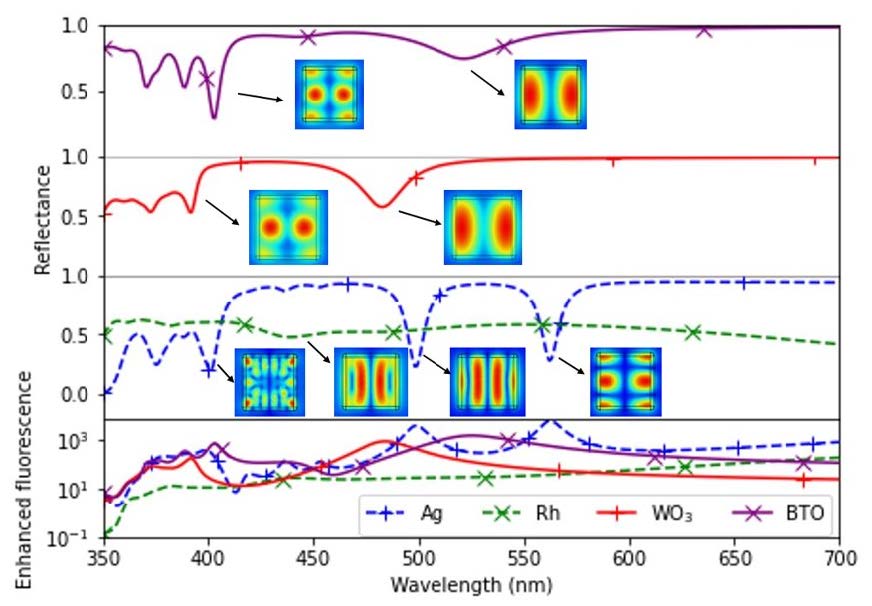
“Spectral properties of intermediate to high refractive index nanocubes”, T. Madeleine, M. Kaczmarek, G. D’Alessandro, Opt. Express 31, 11395 (March 2023); DOI: doi.org/10.1364/OE.485872
Light as a tool for characterisation of liquid crystals
We have developed a new technique, that uses a periodic modulation of the voltage applied to the cell, to measure two sets of liquid crystal viscosity parameters [1]
Graphical abstract of Bennett et al (2017), J. Colloid Interface Sci. – We measure the cross-polarised intensity through a nematic liquid crystal cell at different frequencies of the applied voltage (high, top right; low, bottom right; intermediate, bottom left). Statistical analysis of these curves give the parameters listed on the top left.
Also a methodology to extract wide area information about nematic liquid crystal cells, e.g. a map of the cell thickness or of the pretilt angle has been developed. These measurements coupled with a bootstrapping statistical analysis allows us to obtain accurate measurements of the liquid crystal properties, e.g. its elastic constants [2].
PI planar cell filled with E7: spatial map of the liquid crystal (a) thickness and (c) pretilt angle; (b) and (d) are the corresponding errors. Circles are the fitted values, and the background color map is a piece-wise cubic interpolation between them.
“Characterization of optically thin cells and experimental liquid crystals”, D. Bankova, N. Brouckaert, N. Podoliak, B. Beddoes, E. White, O. Buchnev, M. Kaczmarek, G. D’Alessandro, Appl. Opt. 61, 4663 (May 2022), DOI: 10.1364/AO.456659
“Nanoparticle-Induced Property Changes in Nematic Liquid Crystals”, N. Brouckaert, N. Podoliak, T. Orlova, D. Bankova, A. F. De Fazio, A. G. Kanaras, O. Hovorka, G. D’Alessandro, M. Kaczmarek, Nanomaterials 12, 341 (January 2022). DOI: 10.3390/nano12030341
“Two-dimensional snapshot measurement of surface variation of anchoring in liquid crystal cells”, E. Perivolari, G. D’Alessandro, V. Apostolopoulos, N. Brouckaert, T. Heiser, M. Kaczmarek, Liquid Crystals(May 2021); DOI: 10.1080/02678292.2021.1928309
